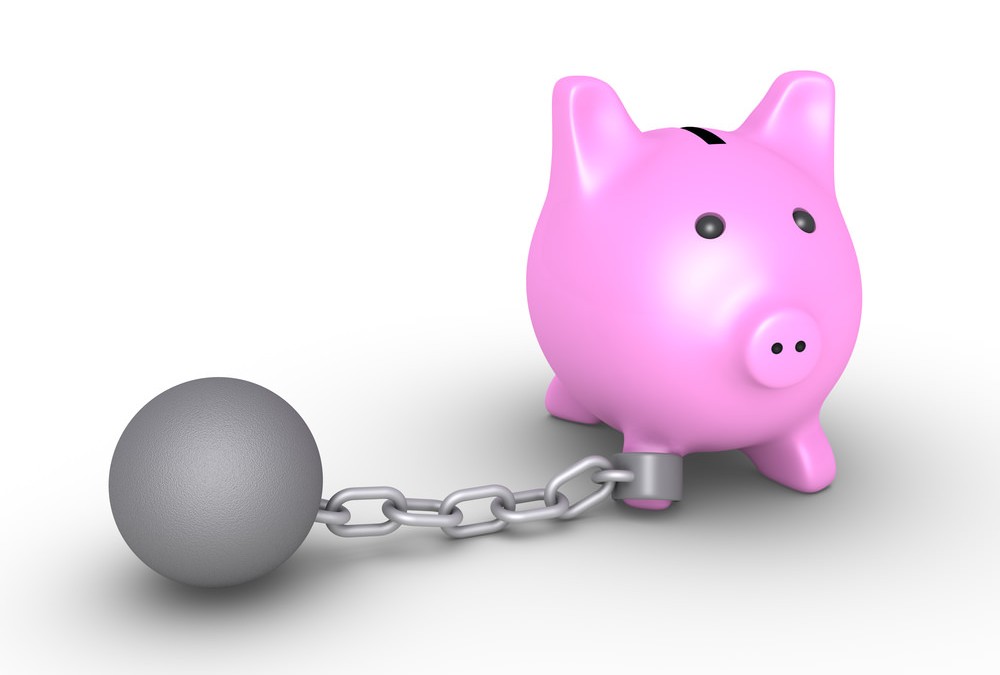The article “When should savings take priority over debt?” was originally published on CreditCards.ca on August 11th 2015, by
Often, if you have a large amount of high-interest debt, it should take a higher priority over building savings. Sure, you should add a little to your savings account from each paycheque, but your instinct will be to throw as much as you can toward the debt to avoid paying too much interest later. However, some instances call for the opposite tactic, where your savings takes priority.
Two experts — Nancy Grouni, certified financial planner with Objective Financial Partners Inc. and Jeri Bittorf, credit counselling manager at K3C Credit Counselling — give their advice on when it might be better to let your debt take a backseat.
1. You receive sporadic income.
Those who are self-employed with variable income, such as contractors or real estate agents, depend on bumper payments from good months to tide them over during bad months, says Bittorf.debt-or-savings
“For those clients, I recommend [setting] up a cushion fund for them to draw from so they don’t have to rely on credit when things come up,” says Bittorf. Otherwise, you might land in a never-ending debt cycle. Even if you pay off all your debt with your next lump sum payment, relying on credit for everyday expenses will steer you back into debt soon enough, she says.
“If you spend months bringing down your credit card and an expense happens, it can be very defeating [to see your] debt increase,” she says. “It can stop [you] from sticking to a budget and plugging away at [your] debt.”
But if an unexpected expense occurs and you can use savings and a smaller amount of credit, if any, the blow won’t be as detrimental, she says.
2. You’re saving up for your child’s education.
The government provides grants when families contribute to a Registered Education Savings Plan (RESP). The grant is 20 per cent of the amount you contribute, up to a maximum of $500 each year. This means if you save $2,500 per child per year, you’ll automatically receive a 20 per cent return on your funds.
If you’re carrying credit card debt that has an interest of more than 20 per cent, it’s better to concentrate on paying that down. But if your APR is lower than 20 per cent, focus on building the RESP, says Grouni.
3. You can’t access more credit.
If you consolidated your loans at a bank or you’re in a debt management program, you may not be able to get any more credit cards for a while, says Bittorf.
A savings account will be your only lifeline if unexpected costs come up. It’s best to accrue about three to six months’ worth of money before allocating extra funds toward your debt, she says. Don’t be discouraged, Bittorf says. Many people feel they’ll never save that much, but as long as you’re truly saving whatever you can, you’re making progress.
4. Your employer offers a great retirement match program.
Many companies offer a group Registered Retirement Savings Plan (RRSP) in which employers will match the amount you contribute, up to a certain percentage. For example, if you contribute 3 to 5 per cent of your salary toward your RRSP, your employer could match it by 50 per cent or more, which is free money, says Grouni. This type of RRSP is common, she says, so if it’s available, it’s wise of you to put as much as you can into the account and maximize your employer’s match.
Ways to start saving
Saving can be difficult, especially when there’s still debt on the table. Whether you pay down debt or add to savings shouldn’t be an all or nothing deal. You should balance the two needs within the context of your overall financial plan, says Grouni.
If you’re having trouble knowing where to start your savings, try these tips:
- Set up an automatic savings deposit with your bank.
- Don’t link your savings account to your debit card. Instead, use a Tax-Free Savings Account (TSFA). A TSFA requires you to make a request to the bank to release the funds, preventing easy access, says Bittorf.
- Ask your payroll department to every paycheque or two into your savings account.

